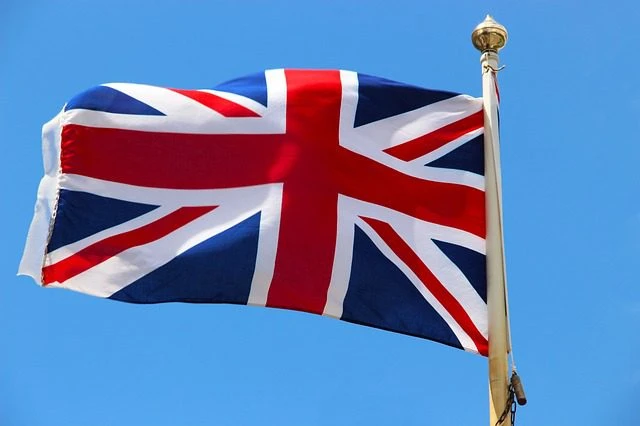The first data from the Gambling Commission’s (GC) Gambling Survey for Great Britain (GSGB) has highlighted the prevalence of lottery among gamblers in Great Britain.
48% of respondents had gambled in the past four weeks, although that figure dropped to 27% when excluding lottery-only players. Over a fifth of all respondents had only taken part in lottery draws.
The 48% figure of respondents having gambled in the past four weeks is a slight reduction on the 49.5% number stated in the final experimental stage of the survey, released back in November.
Participation drop-off without lottery the same for land-based and online
The pattern was the same for online and land-based gambling. 38% of all participants had used the internet to gamble in the previous four weeks, the same as in the November data, although the removal of those who only play lottery saw that number fall to 16%. In-person gambling participation also fell from 29% to 18% when lottery-only players were excluded.
The first part of the GSGB was released last week and will be an annual survey of 20,000 people. This makes it one of the largest gambling data research projects globally.
The first wave of the survey focused on gambling participation in Great Britain, with around 4,800 total respondents. Data was collected between 31 July and 16 November last year.
GSGB highlights prevalence of lottery
The GSGB found the National Lottery to be by far the most popular form of gambling. Tickets for National Lottery draws were purchased by 31% of respondents, with 24% buying online and 17% in person. National Lottery scratchcards were also purchased by 12% of those surveyed.
Other charity lottery draws were prominent too, with 16% of players buying tickets for those in the four weeks prior. 14% of respondents bought these online, while 6% purchased them in person.
The GSGB found lottery to be particularly popular with older age groups. 39% of those aged 75 and over had gambled, with that number falling to 12% when lottery-only players were omitted. This is significant in comparison to 18- to 24-year-olds, where participation dropped from 39% to just 33% when players who only played lottery were excluded.
Factoring out lottery, in-person gambling (18%) was found to have higher participation than online (16%). Land-based betting was shown to be almost even between males and females when lottery-only players were left out, with 19% of men gambling in-person compared to 18% of females.
The GSGB’s findings on other products
Aside from lottery draws, online instant win games were also one of the more popular activities, with 7% of participants gambling on them in the previous four weeks. The National Lottery had a hand in this, too, with 6% playing its online instant win games.
Sports betting was gambled on in the past four weeks by 10% of respondents, with 9% betting online. Just 3% of those surveyed had placed an in-person bet on sports.
For sports betting, football was the most popular market with 7% of those surveyed having bet on it. 4% had wagered on in-play markets, while horse racing had been gambled on by 4% of respondents. 1% had bet on other live sports.
Online slot games, in focus at the minute after a £5 stake limit was introduced in February with a tighter £2 cap for those under 25 years of age, had only seen 3% of respondents use them. Casino games had been gambled upon by 3% of those surveyed. Meanwhile, only 1% of respondents had bet at a land-based casino, the same percentage as machines or terminals in venues such as pubs and bookmakers.
5% of respondents had played bingo over the four weeks prior, with online and in-person participation both at 3%. Other activities included football pools and private betting, which had participation levels of 2% and 3% respectively.
Male participation 10% above female levels
Looking at gender splits, 53% of men of all ages had gambled in the past four weeks, compared to 43% of all females. While male participation was stable from the November data, the participation of females was a 4% drop on the 47% figure recorded at the experimental stage.
The disparity in participation between genders is more pronounced among younger people. The number of males aged between 18 and 24 who had bet excluding lottery in the four previous weeks was 42%, compared to 25% of females in that age range.
Overall participation was highest among males aged 45 to 54 with 59%. This segment also led the way for online gambling with 52% having used online to bet. For females, the age range with the highest participation levels was 55- to 64-year-olds with 52%.
Only 11% of all females had bet online excluding the lottery, compared to 21% of men. Including the lottery, 43% of men had gambled online in the previous four weeks, as opposed to 32% of women.
Excluding lottery-only players, online participation was highest among those aged 25 to 34 at 23%. The GSGB found a significant drop-off when leaving out lottery-only respondents for online gambling, with participation figures rounding down to 0% for both males and females aged 55 and upwards.
Potential to win big the main motivation for players
Those who stated their reason for gambling was to “win big money” stood at 86% of participants. This was split between 88% of males and 84% of women. That response was particularly prevalent among those aged 45 to 54, with 90% citing it as a reason to gamble.
Using gambling as a way to “escape boredom” was highest among 25- to 34-year-olds at 38%, dropping to 12% for those aged 55 and 64. There was a significant disparity between genders who selected that response, with 28% of men choosing it compared to 20% of women.
As a “source of fun” was the second most common answer, with 70% of respondents stating it as one of their motivations to bet. 82% of those aged 25 to 34 pointed to it as a reason to gamble. This was largely even between males and females, at 70% and 71% respectively.
Study finds ambivalence towards gambling
The GSGB also asked people on their perspectives of gambling over the past 12 months. A rating of 0 meant the respondent “hated it”, while 10 was for those who “loved it”.
An attitude of general ambivalence was demonstrated in the GSGB. A rating of 5 dominated the responses, with 37% of those surveyed choosing that number. 7 was second with 12%, while 6 was third, selected by 12% of respondents.
At the two opposing ends of the scale, 4% said they “hated” gambling over the past 12 months. 4% was also the percentage of those who said they had “loved it”.
How has the GC overhauled its data gathering for the GSGB?
Since 2020, the Commission has looked to improve its data processes through consultations, surveys and workshop sessions.
In May 2023, the GC released an evidence gaps and priorities paper for the three years between 2023 and 2026. It outlined the Commission’s intention to undertake evidence-based research on areas like gateway gambling products and the effect of gambling harms.
The GSGB utilises a push-to-web method, in which users are encouraged to participate online before a paper questionnaire is offered as an alternative, as opposed to the telephone survey data collection seen in previous GC surveys.
In the GSGB first wave’s technical report, the GC outlined the strengths and limitations of its research, with the former including the push-to-web methodology’s cost efficiency. The rolling nature of the data reduces the impact of events such as big sporting tournaments on key variables. The survey’s extensive development stage was also cited as beneficial for its statistical accuracy.
Among the limitations was the push-to-web methodology’s lower response rate when compared to face-to-face surveys. The gambling-centred nature of the survey could also disproportionately attract those who gamble, leading to an overrepresentation of that segment.
Unlike the November data, the first wave did not utilise the Problem Gambling Severity Index (PGSI). The PGSI is a set of nine questions about gambling behaviour that estimate the potential risk of gambling harm.
Prior to the first wave research, three experimental stages were conducted with a National Centre for Social Research (NatCen)-led project. These took learnings from previous tests and applied them to ensure the survey was “robust and fit for official statistics”.
The GSGB also underwent an independent review by Professor Patrick Sturgis, a professor at the London School of Economics. Sturgis labelled the study “exemplary in all respects”.
Criticism of the GC
Although Sturgis endorsed the GSGB, he also made seven recommendations. These included encouraging the GC to undertake further research on the potential oversampling of gamblers as well as on the extent of potential bias of questions administered to only online respondents.
The GC has faced criticism in the past over its use of statistics. David Brown, a UK industry veteran of 50 years, highlighted the Commission’s misrepresentation of affordability checks statistics in a 2023 interview with iGB.
Following Sturgis’ review, gambling advisory business Regulus Partners stated there was “little to dispel” the concerns over the GSGB’s potential statistical inaccuracies, believing the “inconvenient truth” had been glossed over.
When will the second wave of the GSGB be released?
Following the release of the first GSGB data, three more waves are expected over the year with around 5,000 responses in each one from adults in Great Britain. The next release will happen on 27 June and will examine further gambling participation and behaviours, with responses gathered from 6 November 2023 to 7 March 2024.
The GC will release an annual publication collating the data from the four waves of the GSGB. Unlike the quarterly data, the annual publication will report on the impact of gambling, outlining the positive and negative effects. The GC hopes the large sample size will allow it to analyse gambling behaviour among specific segments of respondents. The next annual report will be released in July, covering 2023.
As noted in the technical report, the new survey aims to collect data on gambling behaviours, as well as provide a programme of data collection for the GC to utilise. The Commission also hopes the survey will be published as official statistics in accordance with the government’s guidelines.





